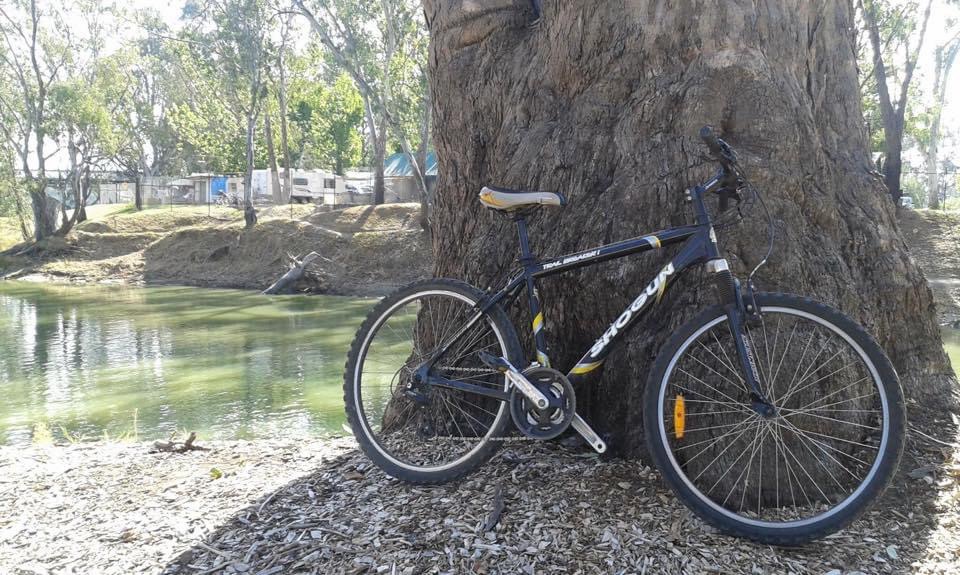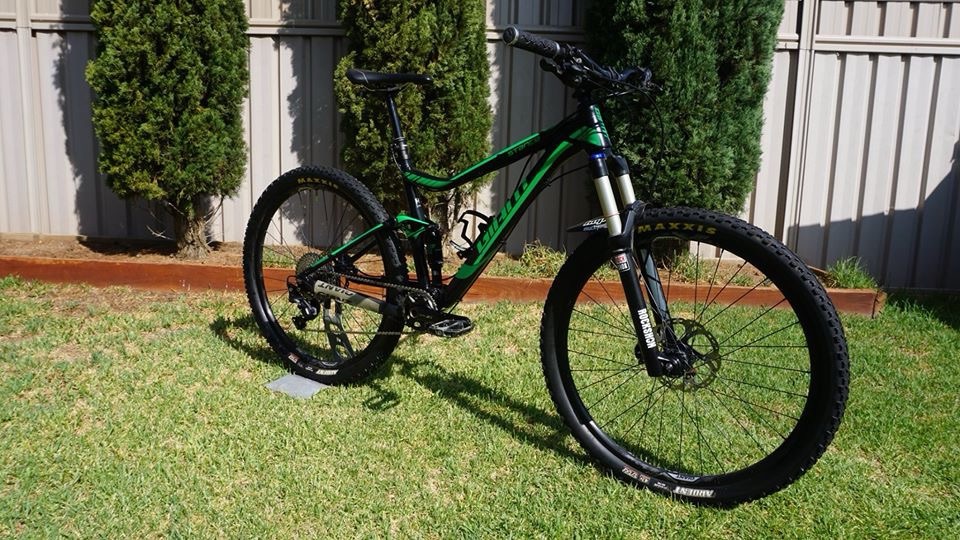Honestly not a piece I thought I would be writing today, but it only occurred to me that I can’t buy a brand new plus tyred bike from major manufacturers. A few years ago it seemed like mullet bikes were the pinnacle for enduro wheel set ups and plus tyred hard tails were a bridging gap between the potential harshness of a rigid frame but not being the high cost of a dual suspension. So how did plus tyres come about, what was the peak of their civilisation, and why can’t I buy a Trek Roscoe with 27.5+ tyres anymore? Here we go.
Soft and Fluffy, Beginnings of the Plus Tyre
Mountain bikers were born when thicker and wider tyres were put on 700c road bike rims so some American dudes could race down mountains in California. So if the thought of “wider and thicker rubber means more grip and softer ride, why not make mountain bike tyres bigger again?” And to that you get the first fat bike which was apparently developed in the late 1980s and early 1990’s as custom bikes before Surly released the Pugsley in 2005 which is regarded as the first fat bike for public consumption. I have a history with fat bikes and honestly they are a ridiculous amount of fun for snow and sand riding, but mediocre for day to day riding unless mud is a major issue for you.



But of course a fat bike is incredibly unique compared to a standard mountain bike, needing bespoke frames, rims, forks, hubs and tyres in order to exist. So what if we had bigger tyres, but this time we made it so they could fit on normal rims and didn’t require an overhaul of the frames and forks to fit? Enter the plus tyre bike.
Again, there is a murky history of who made the first plus tyre bike as genesis, but for public consumption the first plus tyre bike once again belongs to Surly with the Krampus which came with 29×3 inch tyres in 2012. There was also the Instigator with 26 inch plus tyres, but since 26 inch rims were on the way out no one gives much credit to the Instigator.
Plus tyres gained mainstream popularity after the Krampus since bike packers adopted them for touring bikes due to increased traction on climbs and braking with a loaded frame, while also having some small bump absorption due to the larger volume of air. Once the properties of plus tyres were acknowledged by manufacturers, soon plus tyre bikes became a mainstay option on dual suspension and hard tail mountain bikes from 2016-2020 with Orbea Loki, Scott Genius and Spark, Surly Karate Monkey, and of course Trek with their affordable fun machine the Roscoe and later experiments of the Fuel Full Stache (dual suspension 29+) and the Trek Stache (hard tail 29+).


Soon the mountain bike market was wide open with 27.5, 27.5+, 29 and 29+ mountain bikes plus options of mullet bikes in 2018 where a bike had a 29 on the front for precision and fast rolling while the rear had a 27.5+ for traction and plushness. At this point some companies were saying 29 inch were the future, others like Giant doubled down on 27.5, and plus tyres were awkwardly scattered in the ranges for bike packing, enduro or entry level hard tail use.
Peak Plumpness
Plus tyres were in the mix when rim sizes and tyre widths were heavily debated. Boost Hubs, tyre inserts and rim building materials were all contributing factors which improved certain aspects of wheels but ultimately it came down to what sold.
Normal width 27.5 and 29 inch tyres were seen as the fast rolling but less grippy option for racers in cross country and enduro, while plus tyres were the fun and smooth option for casual riders. Mullets again we’re debated as a standard in enduro mountain biking for casuals and racers but because of the UCI rule regulating that “both wheels must be the same diameter” for racing use, factory teams who previously built their downhill and enduro bikes on 27.5 platforms now tried 29er for faster and less technical trails (whatever that means in professional down hill) while 27.5 versions were brought out for the more technical races where nimble handling and wheel placement was vital. This bit becomes vital with how plus tyres were phased out.
Between mullet bikes and 27.5+ gaining some to little traction in casual mountain biking, between 2017 and 2019 was the best years for plus tyre mountain bikes and modifications to make existing bikes plus tyres. While I don’t have solid market statistics from the time, while 29ers were the market share of mountain bikes sold in 2016 to 2020, plus tyres did have some small share to keep them going. And then the bike industry woke up and the pandemic also happened.
The Silent Transition
No matter how many dual suspension bikes came with the mullet option, consumers would side with the traditional 29 front and back. For every 27.5+ hard tail on the market there were arguably better 29er hard tails. And 29+ had come and gone from the mass market within a year. So it was no surprise that it was hard to get a plus bike, but the pandemic was a reset for the bike industry.
With factories closing down or reducing production, any frames and bike that would go on to be made had to be resource sufficient and be mass marketable. If the plus bike was already a weak market sale, between 2020 and 2022 it would be made redundant by what the manufacturers needed to do and what the consumers wanted to buy at the time.
When I thought to myself today “I wouldn’t mind buying a plus tyred hard tail for fun” and casually browsed, that’s when I noticed how the industry had changed while I slept on the dirt riding world. Roscoe is now a 29er with longer travel than a Marlin. Laufey (formerly the Loki) was a 29er with longer travel. Scott Scales, Giant Talons, Surly Karate Monkeys, Specialized Rock Hoppers, GT Zaskar, and many of the other popular hard tails that still could be plus tyres are now solid 29ers. The plus tyre is gone and all we have is the memories.
Why is 29 the King?
After doing three of these now, it all comes back to 29ers out living wheel sizes before it. 26 inch died, 27.5 inch died and then the whole plus tyre option has also gone and all that remains for the average adult rider is a mountain bike that features 29 inch rims. But it is for good reason and part of it was 29ers taking on technologies and improvements that made the inferior wheel sizes competitively viable.
700C or 29 inch rims were the genesis of mountain biking, but were floppy and weak under high cornering loads of downhill. So 26 inch wheels stepped in with a stiffer platform from the same hubs but the smaller diameter lead to better lateral load and flexion resistance. Better rim building and spokes were made to improve 29 inch wheels, and with their superior rolling resistance and ability to roll over imperfections, 29ers won.



27.5 came along boasting better contact patch to the trail, reduced gyroscopic forces in the air and cornering and being the perfect combination of 29 inch and 26 inch wheel properties. This was also at the same time that Boost Hubs were becoming a mainstream standard so while 27.5 were stiffer in the corners and did indeed move better in the air, once 29 inch rims were laced to Boost Hubs to benefit from their properties again the 27.5 became irrelevant in most cases and is mainly used in extra small bikes where 29ers are impractical or bespoke applications like free ride or enduro bikes (like the Rocky Mountain Slayer).


The plus tyre only had a shot thanks to a 27.5+ tyre having near the same tyre diameter as a 29. With lower pressures allowing for greater traction and small bump absorption it did give it an initial bonus over traditional 29ers, but again with tyre inserts, better build quality in rims allowing for better feeling ride and tyre manufacturing processes making lower pressures possible, having a tried and tested rim size for the 29er made sense.
In the end, as each rim size and tyre width was devised to provide some pseudoscientific gain over the original 29 inch wheel, the technology or engineering principles that went into that wheel came across to the 29er and made it better. Having owned a 26er, 27.5 dualie and still having a 27.5+ fully rigid; the bike that I trust the most and feels the best in all conditions is my dual suspension bike with 29×2.6 inch tyres. And I don’t think that the 31 inch wheel will come into the mainstream and crush 29s, the pandemic proved that having a standard wheel size and width allows for the greatest customisation on all aspects and makes aftermarket work and new sales drastically easier. Because if I wanted to tomorrow, I could buy a set of enduro tyres and put them on my wife’s Marlin because it’s a 29er.
Where does the industry go from here? We’ll practically no where honestly. And it feels like most things are sorted for other component standards as well. Multi-chain rings exist on affordable MTBs but 1×11 or 1×12 is common these days with no real push for 13 speed happening yet. Suspension travel is increasing across the categories where 120mm is now XC where previously 120mm was a trail rider, but suspension technology is improving to the point that you choose the fork based on the weight or how much give you want, not because you need 180mm or more for drops and jumps. Dropper posts are a mainstay, Boost Hubs are a mainstay, gimmicks like ReActiv suspension or Shapeshifter are fading away. The landscape is settling into the buyer being able to choose a bike with either dual suspension or hardtail, and how much travel do you want? That’s great in a way, but I wonder what will separate the companies aside from value for money for the parts they spec? It’s strange to think the industry I got into during university as a hobby was exploding and taking off in wild directions, but now everything falls back to everything has 29 inch wheels.
Until next time, keep riding and stay awesome!
